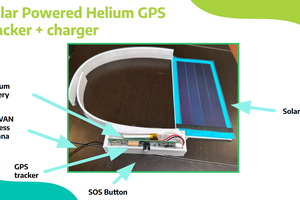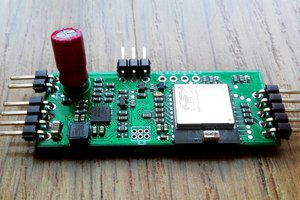Another driver for the project was the fact that I wanted to make a "mobile" satellite receiver groundstation. I could always make a little box with all the pieces in it, but wouldn't it be cool if it was all attached to a hat? There are a few upcoming PocketQube satellites using either LoRa or ISM band radios, such as FossaSAT, Nepal-PQ1 and my own OzQube-1.
Seeing that the "Flexible PCB Concept Contest" was going AND this project needs to have a flexible PCB to match the curve of the brim of a cap, it was a match made...on Hackaday.io?
CONCEPT
The first goal of this project was to make a LoRa repeater, based on Dave Ackerman's project. It uses a small LiPo battery to power an Arduino Pro Mini through a 5V boost circuit. The Pro mini is connected via SPI to a small LoRa radio tranceiver module. My concept is going to replace the Lipo Charger with a solar powered version, and utilise a Supercap instead of the Lipo.
The Pro Mini will be built directly onto the Flex-PCB substrate, along with the charging circuitry. The solar panels themselves are from IXYS, and measure 44.5x21.5mm. They will be positioned on secondary flex-pcbs's either side of the main one. See the sketch to get the idea.
I'll also embed a 433mhz spiral antenna in the flex-pcb too. It might look a bit funny having a small monopole antenna on top of your head.
PARTS
The radio module will be a common LoRa module based on the Semtech SX1276 IC or the equivalent from HopeRF, the RFM98W. The power supply will be similar to a previous project I created for the square inch project.
The Supercap will be charged from the first IC - the Analog Devices ( Linear Tech) LTC3105. This IC has MPPT, which will optimise the power generated from the solar panels. The Supercap will then be regulated to 3.3V output through a second LTC3105. Because of the low startup voltage of this IC, I'll be able to use most of the capacity of the Supercap while maintaining 3.3V output.
 OzQube
OzQube

 Corsix
Corsix
 DiyHax
DiyHax
 Jurist
Jurist
I love it :D